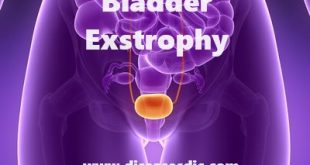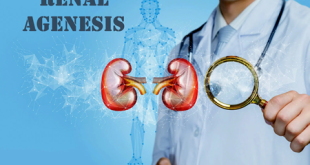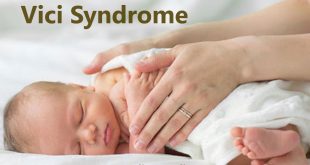Batten Disease – Definition
Batten disease is the name for a group of inherited nervous system disorders that most often begin in childhood and interfere with a cell’s ability to recycle a cellular residue called lipofuscin. Batten is commonly being used to describe the many forms of the disease, called neuronal ceroid lipofuscinosis. The many forms of the disease are classified by the gene that causes the disorder, with each gene being called CLN (ceroid lipofuscinosis, neuronal) and given a different number as its subtype. Because of the different gene mutations, signs and symptoms range in severity and progress at different rates.
Symptoms generally include:
- Progressive vision loss leading to blindness,
- Seizures
- Movement disorder, and
- Dementia
Developmental skills such as standing, walking, and talking may not be achieved or are gradually lost. Other symptoms that continue to worsen over time include learning difficulties, poor concentration, and progressive loss of language skills and speech. Most children become bedridden and unable to communicate. Some children develop problems sleeping. Currently, most diagnoses of Batten disease are made by genetic testing.
Epidemiology
- Batten’s disease is the most common neurodegenerative disorder in childhood.
- It is caused by a mutation in the CLN3 gene which is inherited in an autosomal recessive pattern mostly in Caucasian populations.
- The CLN3 mutation has reported incidences that range from 0.02-4.8 per 100,000 worldwide.
- With advancements in genetic analyses and databases, the carrier frequencies for the most common mutation have been estimated.
- In Finnish and non-Finnish Europeans, the estimated frequencies are 1/558 and 1/380, whereas in Latinos and USA it is estimated to be 1/1169 and 1/506.
Types of Batten Disease
Originally, doctors only referred to one form of NCL as Batten disease, but now the name refers to the group of disorders. Of the four major types, the three that affect children all cause blindness.
Congenital NCL affects babies and can cause them to be born with seizures and abnormally small heads (microcephaly). It’s very rare and often results in death soon after a baby is born.
Infantile NCL (INCL) usually shows up between the ages of 6 months and 2 years. It also can cause microcephaly, as well as sharp contractions (jerks) in the muscles. Most children with INCL die before they turn 5 years old.
Infantile NCL
Late Infantile NCL (LINCL) typically starts between the ages of 2 and 4 with symptoms like seizures that don’t get better with medication. It includes the loss of muscle coordination. LINCL is usually fatal by the time a child is 8 to 12 years old.
Adult NCL (ANCL) starts before the age of 40. People who have it have shorter life spans, but the age of death can vary from person to person. The symptoms of ANCL are milder and they tend to progress more slowly. This form of the disease does not result in blindness.
Batten Disease Risk factors
Since Batten disease is an inherited condition, people at risk include:
- Children of parents with Batten disease
- Children of parents not afflicted with Batten disease, but who carry the abnormal genes that cause the disease
Causes of Batten Disease
- Batten disease is a genetic condition most commonly inherited in an autosomal recessive manner (two defective gene copies, one from the mother and one from the father), although there are cases of autosomal dominant inheritance in Batten patients whose disease starts in adulthood.
- Several genetic mutations have been linked to Batten disease. These mutations all affect the ability of cells to get rid of waste products, leading to a build-up of substances that are toxic to tissues in the body, especially to nerve cells in the brain and cells of the eye, as well as in the skin and other tissues.
- Specifically, the disease is linked to the buildup of lipofuscins, made up of fats and proteins, in tissues. These substances are found in the part of a cell called the lysosome; lysosomes are responsible for clearing cells of waste products and damaged products.
- Progressive cell damage and death lead to the range of neurological and other symptoms seen in Batten patients.
Pathophysiology of Batten Disease
- Batten disease primarily affects the nervous system. The genetic defect affects lysosome functions. There is an excessive accumulation of substances called as lipopigments (lipofuscin) in the cells of the brain.
- These lipopigments are made of fats and proteins and accumulate in different body tissues such as retina, skin, muscles, and central nervous system. This accumulation affects functions of neurons and leads to their death. The changes are seen in the form of progressive symptoms.
- These lipopigments show greenish-yellow color under UV light microscope. They form deposits inside the cells which are seen as half-moon shapes, fingerprint or sand grain shapes.
Symptoms of Batten Disease
The symptoms of Batten disease stem from its classification as a lysosomal storage disorder, interfering with cells’ ability to break down wastes. The build-up of waste or, lipofuscin, causes cell death and leads to the early death of children and some adults. During the progression of the disease, which varies by type, the affected child or adult can experience a combination of some of the below characteristics. It is important to note, each presentation is unique and not all symptoms are present in every phenotype.
- Seizures
- Visual impairment/blindness
- Personality and behavior changes
- Ataxia
- Myoclonus
- Dementia
- Cognitive decline
- Psychiatric symptoms (i.e. aggression)
- Extrapyramidal symptoms (i.e. spasms, restlessness, rigidity, tremors, jerky movements)
- Loss of motor skills and the ability to walk, talk and communicate
Batten Disease complications
The condition may give rise to certain complications like:
- Blindness or eyesight impairment (in case of the early-onset forms)
- Mental impairment, that ranges from severe retardation at birth to Dementia at a later stage in life
- Muscular rigidity (due to acute problems with the nerves that control muscle tone)
As a result of such health complications, a patient may become entirely dependent on his or her friends or family members to carry out daily activities.
Diagnosis and test
The following tests are often used in combination to diagnose juvenile and other forms of Batten disease:
Fluorescent deposits
The accumulation of autofluorescent cored lipofuscin deposits throughout the body is a hallmark sign of juvenile Batten disease. These deposits can sometimes be detected by visually examining the back of the eye. Over time, these deposits appear more pronounced, the thickness of their retina is reduced, and ophthalmologists see circular bands of different shades of pink and orange at the optic nerve and retina in the back of the eye. Doctors call this a “bull’s eye.
Visual Evoked Potentials and Electroretinograms
These are recordings of abnormal electrical signals in the visual processing center of the brain.
Blood tests
Abnormal or vacuolated lymphocytes (white blood cells) are found in metabolic disorders such as juvenile Batten disease.
Urine tests
These tests can detect the presence of elevated levels of long chain, mostly unsaturated organic compounds, called dolichols. Dolichols can be found in the urine of many patients with Batten and other metabolic diseases.
Skin or tissue sampling
The accumulation of ceroid lipofuscin deposits throughout the body is a hallmark sign of Lysosomal Storage Diseases. These deposits can be detected by viewing skin cells under a microscope and in some cases, by visually examining the back of the eye. In general, these deposits resemble fingerprints.
Electroencephalogram (EEG)
An EEG records electrical activity in the brain through electrode patches placed on the scalp. Physicians use painless and noninvasive EEGs to look for telltale signs of seizures typical of juvenile Batten disease.
Brain Scans
Imaging can help doctors look for changes in the brain’s appearance. Two commonly used imaging techniques are computed tomography, or CT, and magnetic resonance imaging, or MRI. Both are sophisticated technologies that may be able to detect that certain brain areas are shrinking in children with juvenile Batten disease.
Measurement of enzyme activity
In several NCLs such as the Infantile (CLN1) and Late Infantile (CLN2), certain enzymes are greatly reduced or totally absent. Measuring the level of these enzymes in white blood or skin cells can separate juvenile (CLN3) Batten disease from enzyme-deficient NCLs.
DNA analysis
Screening one’s DNA blueprint obtained from blood, saliva or skin can find mistakes in the CLN3 gene responsible for juvenile Batten disease.
Treatment and medications
There is no known treatment that will stop the progression or effects of Batten disease. Treatment will depend on the types of symptoms present. The goal is to ease symptoms. Options include:
Medications
Examples include:
- Antiseizure medications
- Antipsychotics to control seizures, depression, anxiety, and muscle spasms
- Medications to control other symptoms, such as gastroesophageal reflux disease (GERD)
- Antibiotics to control bacterial infections, such as pneumonia
Nutritional Support
If there is a high risk of malnutrition or dehydration, a nasogastric tube can be used. It is a long, narrow tube that is placed through the nose and into the stomach. Liquid nutrition, water, and medications can be delivered through the tube.
Other Therapies
Other supportive treatments may include:
- Physical therapy to maintain as much movement as possible
- Occupational therapy to assist in everyday tasks and self-care
- Dietary changes which may include vitamin C and E supplements or a diet low in vitamin A
Prevention
There is no known way to prevent Batten disease. If you have Batten disease or have a family history of the disorder, you can talk to a genetic counselor when deciding to have children.
 Diseases Treatments Dictionary This is complete solution to read all diseases treatments Which covers Prevention, Causes, Symptoms, Medical Terms, Drugs, Prescription, Natural Remedies with cures and Treatments. Most of the common diseases were listed in names, split with categories.
Diseases Treatments Dictionary This is complete solution to read all diseases treatments Which covers Prevention, Causes, Symptoms, Medical Terms, Drugs, Prescription, Natural Remedies with cures and Treatments. Most of the common diseases were listed in names, split with categories.







